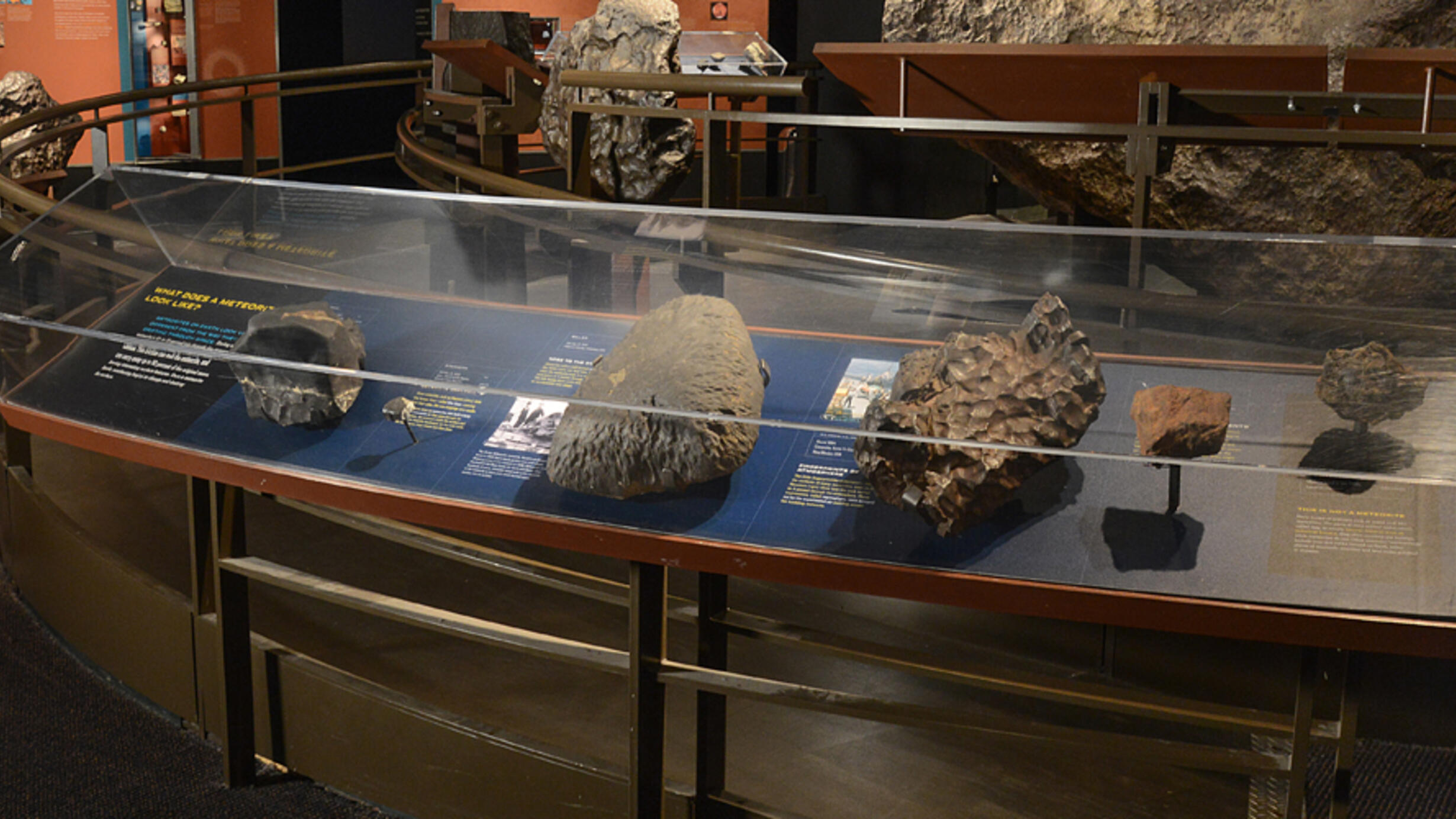What Does a Meteorite Look Like?
Part of Hall of Meteorites.

Meteorites on Earth look very different from the way they did drifting through space. During a meteorite's 10- to 15-second trip through the atmosphere, air friction heats its surface to a red-hot 1,800 degrees Celsius. This friction can melt the meteorite, and can carry away up to 90 percent of the original mass, leaving interesting surface features. Once a meteorite lands, weathering begins to change and destroy its surface.
In This Section

Modoc (AMNH 604)
Wrapped in Black Glass
Rocks floating through the vacuum of space are chilled to well below freezing. When a meteorite passes through Earth's atmosphere, its inside stays cold even as its surface melts away. Before it hits the ground, the molten surface solidifies into a thin glassy coating, called fusion crust. Crystals of magnetite—an iron-oxide mineral—color the fusion crust black. The broken surface of Modoc shows contrast between its lighter-colored interior and its dark fusion crust.
MODOC
Fell September 2, 1905
Scott County, Kansas, USA
L6
AMNH 604

Stannern
Meteorite Drippings
Some meteorites, such as Stannern, have tiny bumpy lines—called flow lines—running down their sides, like wax drippings on a candle. Flow lines form on meteorites that hold a fairly stable orientation as they pass through the atmosphere. Air pressure melts the surface and pushes the droplets backward. As the rock cools, the last flowing drips freeze into flow lines.
STANNERN
Fell May 22, 1808
Iglau, Jihomoravsky Region, Moravia, Czech Republic
EUC
AMNH 554

Miller
Nose to the Ground
Meteorites with a well-formed nose cone shape, like Miller, are very rare. They develop when the meteorite stays in a constant orientation as it passes through the atmosphere. The side facing Earth melts and erodes into an aerodynamic cone shape.
MILLER
Fell July 13, 1930
Cleburne County, Arkansas, USA
H5
AMNH 2624

Glorieta Mountain
Fingerprints of the Atmosphere
The little fingerprintlike indentations seen on the surfaces of many meteorites, such as Glorieta Mountain, show how the rock melted as it passed through the atmosphere. These impressions, called regmaglypts, were scooped out by the superheated air swirling around the tumbling meteorite.
GLORIETA MOUNTAIN
Found 1884
Canoncito, Sante Fe County, New Mexico, USA
PAL
AMNH 680

Dalgety Downs
Exposed to the Elements
Some meteorites, such as Dalgety Downs, sit outside for thousands of years before they're discovered. Rain, wind, heating and cooling can cause weathering of the surface—rust and cracks that eventually break a meteorite to pieces. Weathering begins as soon as moisture in the air contacts the meteorite's surface. Even slight weathering begins to destroy clues to the rock's original composition.
DALGETY DOWNS
Found 1941
Gascoyne District, Western Australia, Australia
L4
AMNH 4190

Furnace Slag
This is Not a Meteorite
Many hunks of ordinary rock or metal look like meteorites. The piece of once-melted metal, called slag, is simply leftover material from an industrial furnace. Slag often contains gas bubbles, while meteorites do not. Other common "meteowrongs" include iron-rich rocks formed on Earth, fallen pieces of manmade satellites and lava rocks polished in streams.
FURNACE SLAG
Manufactured in late 1900s
Location unknown
AMNH collection